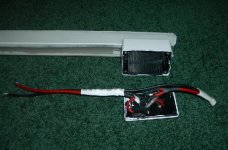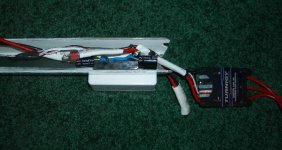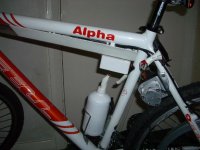BenMoore
100 mW
Go Grinhill!
Your original RC motor drive had already inspired me to start procuring parts for a 'Moore Mk I'. I love the ultra-light, inexpensive and innovation of your system designs
Its great to see continuing development here.
I hope to join in with a build thread of my own efforts and collected ideas from all the good Forum folk soon as I think the RC motor route has a lot to offer.
Coming from the virtual silence of my Crystalyte hub motor to fully opening the throttle of my 'cute' new RC motor at 48V on the bench , my main design concern is now noise reduction. I'm looking at reconfiguring the motor's wiring from Delta to Wye to lower its kV and increase torque so that lower motor speeds can be used. Also, with access to a lathe the bell (and axle) could be rebuilt/replaced so as to create a mini hub style motor - the rotor becoming supported on both sides. If its worth the effort, I expect it whould minimise the screeching resonances of the original bell rotor and perhaps achieve better conductive cooling through a thicker and stationary axle as well... anyone game to try?!
, my main design concern is now noise reduction. I'm looking at reconfiguring the motor's wiring from Delta to Wye to lower its kV and increase torque so that lower motor speeds can be used. Also, with access to a lathe the bell (and axle) could be rebuilt/replaced so as to create a mini hub style motor - the rotor becoming supported on both sides. If its worth the effort, I expect it whould minimise the screeching resonances of the original bell rotor and perhaps achieve better conductive cooling through a thicker and stationary axle as well... anyone game to try?!
BTW, speaking of noise, don't you get sick of the same, bolted-on album on your integrated stereo? :lol:
Your original RC motor drive had already inspired me to start procuring parts for a 'Moore Mk I'. I love the ultra-light, inexpensive and innovation of your system designs
Its great to see continuing development here.
I hope to join in with a build thread of my own efforts and collected ideas from all the good Forum folk soon as I think the RC motor route has a lot to offer.
Coming from the virtual silence of my Crystalyte hub motor to fully opening the throttle of my 'cute' new RC motor at 48V on the bench
BTW, speaking of noise, don't you get sick of the same, bolted-on album on your integrated stereo? :lol:






